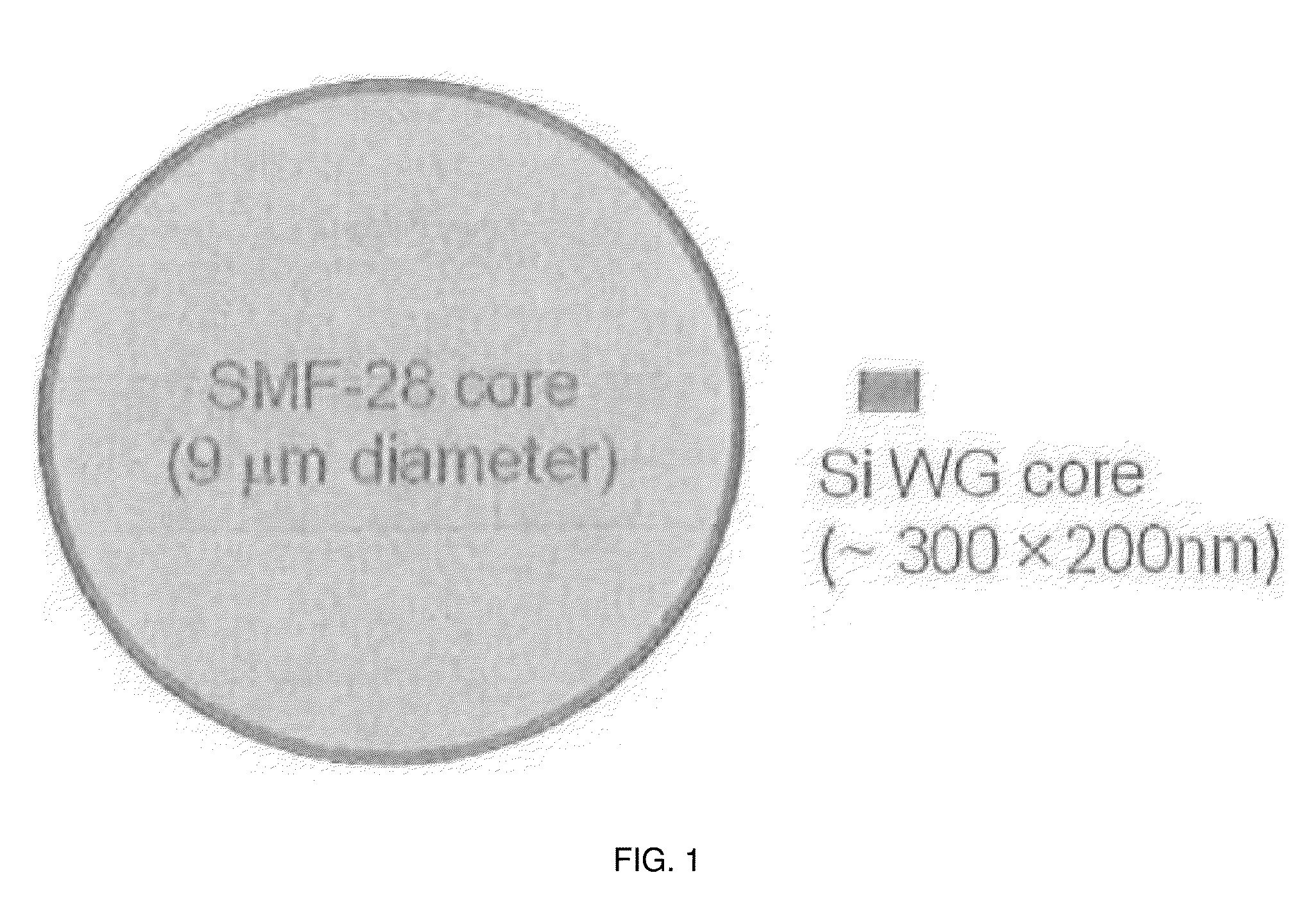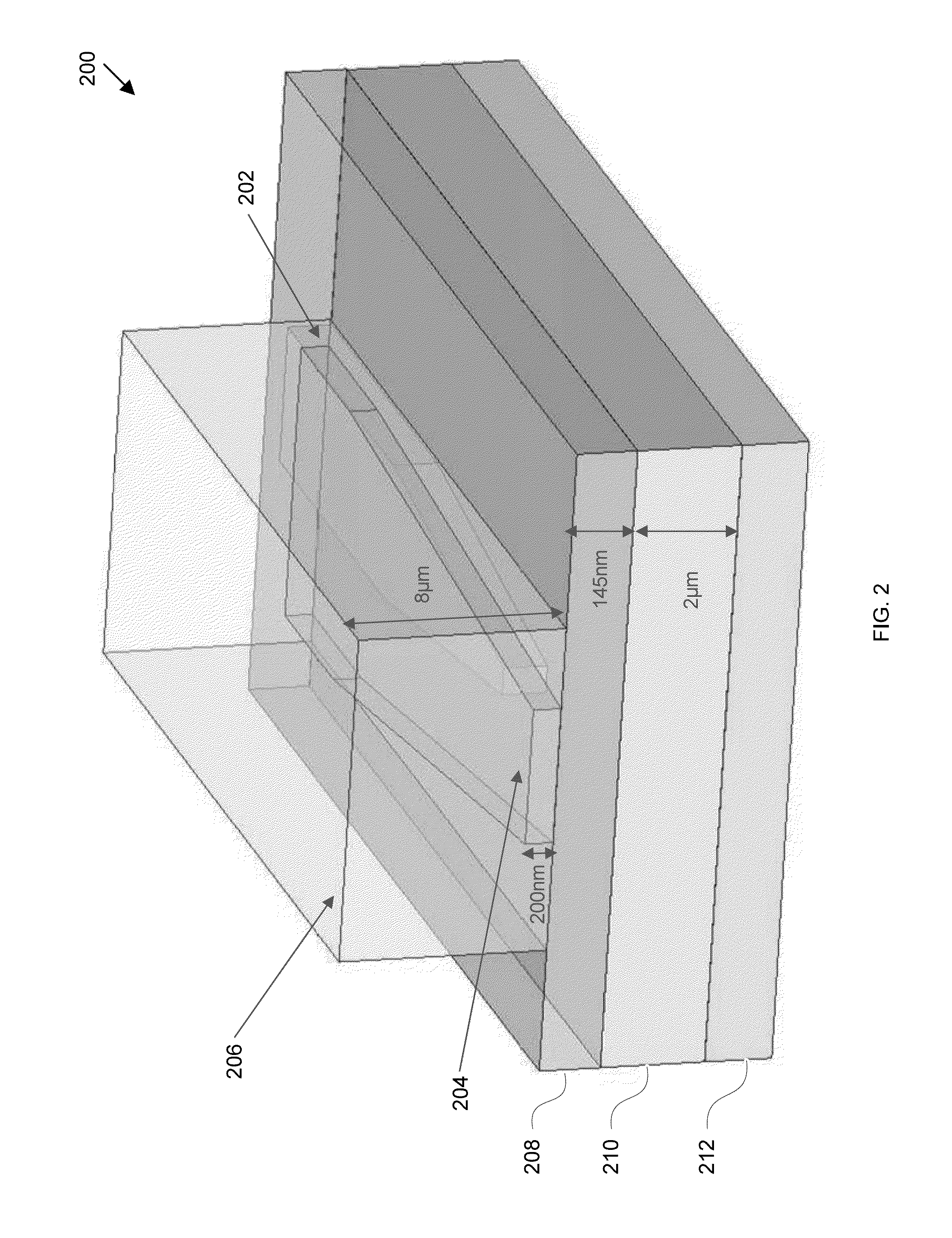Mode size converters and optical assemblies
- Summary
- Abstract
- Description
- Claims
- Application Information
AI Technical Summary
Benefits of technology
Problems solved by technology
Method used
Image
Examples
Embodiment Construction
[0025]Aspects of the invention provide mode size converters. Such aspects are particularly useful for chip-to-fiber coupling in silicon photonics devices and reduce optical coupling loss due to mode mismatch between silicon nano-wire waveguide and standard single-mode fiber effectively. Aspects of the invention can be fabricated / assembled in an automated and cost-effective way, and have potential to reduce overall cost of photonic integrated circuits packaging.
Mode Size Converters Incorporating Inverse Taper Silicon and Silicon Nitride Waveguides
[0026]One aspect of the invention provides a mode size converter 200 including a silicon waveguide 202 having an inverse taper from a first end, a silicon nitride (Si3N4) waveguide 204 having an inverse taper from the first end, the silicon nitride waveguide substantially parallel to the silicon waveguide 202, and a polymer waveguide 206 applied over the silicon nitride waveguide.
[0027]The inverse taper of the silicon waveguide 202 can grow ...
PUM
| Property | Measurement | Unit |
|---|---|---|
| Diameter | aaaaa | aaaaa |
| Diameter | aaaaa | aaaaa |
| Length | aaaaa | aaaaa |
Abstract
Description
Claims
Application Information
 Login to View More
Login to View More - R&D
- Intellectual Property
- Life Sciences
- Materials
- Tech Scout
- Unparalleled Data Quality
- Higher Quality Content
- 60% Fewer Hallucinations
Browse by: Latest US Patents, China's latest patents, Technical Efficacy Thesaurus, Application Domain, Technology Topic, Popular Technical Reports.
© 2025 PatSnap. All rights reserved.Legal|Privacy policy|Modern Slavery Act Transparency Statement|Sitemap|About US| Contact US: help@patsnap.com



